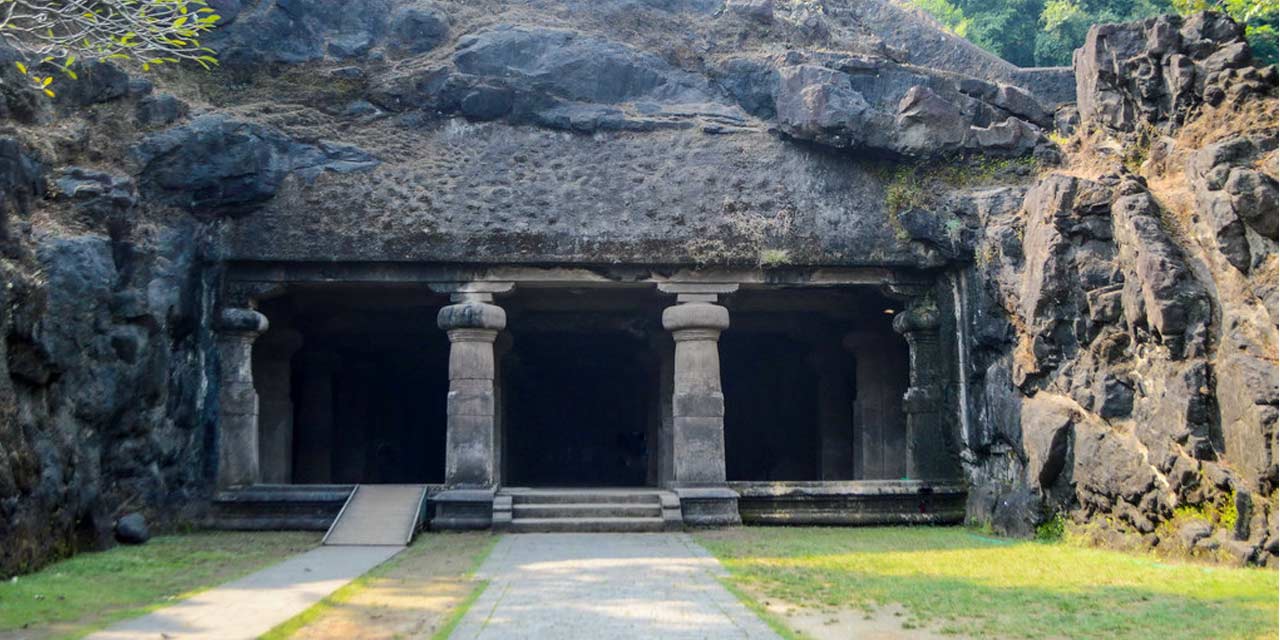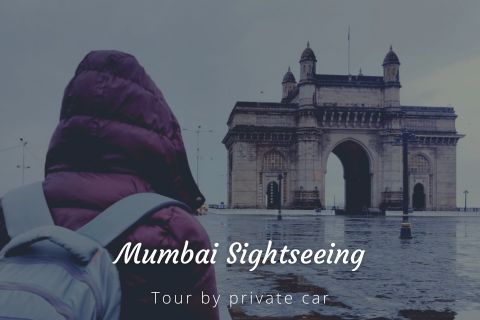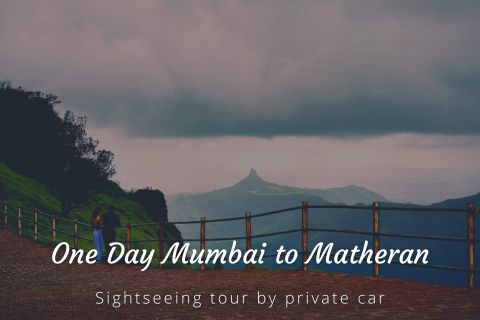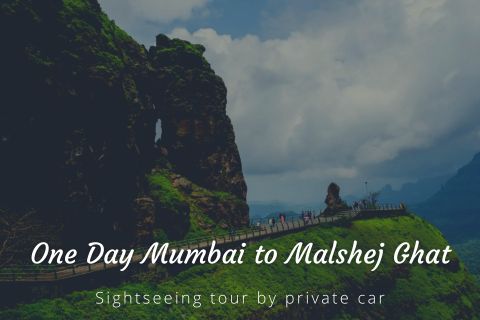
Elephanta Caves Mumbai Entry Fee
- 40 per person for Indian, Afghanistan, Bangladesh, Bhutan, Maldives,Myanmar, Nepal, Pakistan, Sri Lanka, Thailand citizens
- 600 per person for other foreign citizens
- 10 per person for Village entry
- 10 per person for Toy Train ride
- No fee for Still Camera
- 25 for Video Camera
Elephanta Caves Mumbai Phone
022 2204 4040
Elephanta Caves Mumbai Address: Gharapuri, Maharashtra, 400021, India
Mumbai City Tour Packages
Elephanta Caves Mumbai Timings
| Day | Timing |
|---|---|
| Monday | Closed / Holiday |
| Tuesday | 9:00 am – 5:00 pm |
| Wednesday | 9:00 am – 5:00 pm |
| Thursday | 9:00 am – 5:00 pm |
| Friday | 9:00 am – 5:00 pm |
| Saturday | 9:00 am – 5:00 pm |
| Sunday | 9:00 am – 5:00 pm |
Rating:  | 4/5 stars
| 4/5 stars
Based on total 71 reviews
Elephanta Caves are a group of Buddhist and Hindu caves, about 10 km away from Mumbai. It is located on Elephanta Island, also known as Gharapuri island.
The group has seven rock-cut caves, and it has been declared a UNESCO World Heritage Site. Of the seven caves, five are dedicated to the Hindu God Shiva, and the other two caves are built in Buddhist style.
Although most of the artworks and inscriptions in caves are ruined, parts of it have been restored. And the Cave 1, also known as the Great Cave, is in the best condition among others.
Elephanta Caves Island is also popular as a place of worship among Hindus. They come here to worship Lord Shiva. It serves as a trekking destination too. On a clear day, you can even enjoy an amazing view of the Mumbai skyline.
So, get on a ferry and visit these historic caves.
History of Elephanta Caves
Elephanta Caves history is uncertain.
However, based on the excavations and similarities with other caves, historians date them to be built anywhere between 5th century CE and 8th century CE. And the credit for their construction goes to the kings of the Kalachuri dynasty. Some people also believe that Chalukya or Rashtrakuta rulers created these magnificent caves.
Many other rulers, including the Mauryas, the Shahis and the Marathas, administered the region afterwards. Portuguese came here in the 1500s and named it as Elephanta Island when they saw a huge elephant statue. That statue today is kept in Dr Bhau Daji Lad Museum in Mumbai.
The caves suffered serious damages too, during the Portuguese rule. By the time the British arrived, in the 17th century, the caves were in poor shape.
The preservation of Elephanta Caves began in the 1900s, and during the 1970s, the Great Cave was restored to its present form. Other caves were mended too.
Architecture of Elephanta Caves
The Elephanta Caves complex consists of seven caves, divided into two groups. And the caves are cut from solid basalt rock.
The first group has five caves, which are carved with Hindu sculptures. The Cave 1 is the most elaborate. Beautiful artwork covers the walls. The cave has a pillared mandapa too, which is home to a Shivalinga. A large hall is also part of the cave, which has different statues of Lord Shiva along the walls.
Other four caves are smaller, and not as detailed.
And the second group has two caves built in the Buddhist style. The larger cave has chambers for monks, a central shrine and a big hall.
Image Gallery of Elephanta Caves Mumbai
Things to do at Elephanta Caves
The Grand Cave (Cave 1) is the largest in the complex and it has been preserved and restored as much as it could be. At the north entrance, you’ll find statues of Shiva, in his Nataraja form and Yogishvara form. And within the cave, you’ll find many sculptures and carvings from Hindu mythologies. Of those, the large 20 feet monolithic statue of Trimurti – a three-headed Shiva, is the most notable.
The Trimurti is one of the main attractions of the cave. And it is on the south wall, facing the entrance. The Shivalinga in the large mandapa hall is towards the west. And you’ll also find sculptures of Ardhanarishvara, Gangadhara and Ravananugraha on the walls.
A carving known as the Wedding of Shiva is present too.
Cave 2 and 3 are smaller than the first cave and each has a mandapa hall standing on pillars. The other two Hindu caves are in ruins today.
Cave 6, which provides a glimpse of Buddhist style, is also known as the Sitabai Temple. It has a large hall with three chambers, the central one of which has a shrine. The walls of this cave are adorned with intricate carvings. The other Buddhist cave is incomplete.
A narrow path near the first group of caves takes you to the top of Cannon Hill. You’ll see two large canons there. And you also get captivating views of the surrounding sea and the skyline of Mumbai.
Apart from the caves, you can also visit the small archaeological museum. It is near the ticket counter. Here, you can see various items related to Elephanta Caves and the island. The museum also exhibits information about other rock-cut cave temples in India.
On the way towards the caves, you’ll find many souvenir shops and snack stalls too.
Elephanta Caves Entry Fees and Timings
Elephanta Caves in Mumbai is open throughout the year, except on Mondays. It takes an hour for an Elephanta Caves ferry to reach the island from Mumbai.
The first ferry leaves the Gateway of India jetty at 9 AM, and the last one is at 2 PM. And the last ferry, to return to the mainland from Elephanta Island. leaves at 5 PM. You will get the return tickets from Gateway of India itself. The Elephanta Caves ferry costs between ₹100 and ₹200 depending on the boats you board. And a boat leaves the jetty every half an hour.
As for Elephanta Caves entry fee, it is ₹40 per person for Indians and visitors from SAARC countries. For other foreign nationals, the fee is ₹600. Along with the entry charges, additional ₹10 is levied to enter the village. You are also charged ₹25 for the video camera. Photography is free.
Elephanta Caves Island also has a small toy train to take you from the jetty to the entrance of the cave complex. It costs ₹10 per person.
Best Time to Visit Elephanta Caves
The best time to visit the caves is between October and March, when the temperature isn’t high, and the sky remains comparatively clear. Also, if you visit Mumbai in February, you can attend the Elephanta Island festival. It’s a two-day cultural festival featuring regional music and dance programmes.
Elephanta Caves in monsoon are fascinating too. But the ferry services might be off when it’s raining, or the sea waves aren’t favourable for the short cruise.
So, visit the cave during winter, between November and February. And take one of the first ferries of the day to explore the caves without any hassle.
Time to Explore Elephanta Caves in Mumbai
You’ll need half of a day to explore Elephanta Caves Mumbai.
It will take you around two hours to visit the caves, the Cannon Hill and other structures in the vicinity. Then, the one-way ferry trip takes about an hour. So, add another two hours for the ferry rides. And if you love to trek, reserve some extra time to explore the small Elephanta Caves village.
Also, on a busy day, you might have to wait for half an hour on the jetties for your ferry.
Things to keep in mind while visiting Elephanta Caves
- Plan your visit, keeping in mind the ferry timings.
- Take Elephanta Caves guided tour from licensed guides only.
- Beware of monkeys; keep food items inside your bag.
- Have plenty of water.
- Wear comfortable shoes.
- Carry your hat and sunglasses.
- Apply sunscreen lotion.
Places to visit near Elephanta Island Caves
1. Gateway of India – Gateway of India is the iconic landmark of Mumbai. It is a stone arch built to mark the first visit of King George V and Queen Mary to India in December 1911. Gateway of India is the starting point for Elephanta caves tour and many other ferry rides around Mumbai. It is 10 km away from Elephanta Island.
2. The Asiatic Library – The Asiatic Society Library, also known as Town Hall Library, is one of the oldest libraries in the city. It has the original manuscript of Dante’s Divine Comedy and many ancient manuscripts written in Persian, Sanskrit and Prakrit. The library also has many other rare manuscripts, maps and artefacts. It is about 2 km from Gateway of India.
3. Flora Fountain – Flora Fountain is a heritage landmark with a sculpture of Roman Goddess Flora at the top. Flora Fountain is near Churchgate, about 2 km away from Gateway of India. It is an architectural marvel, surrounded by many renowned Victorian-era buildings.
4. Churchgate Area – Churchgate is the business district of Mumbai. And it is the hub for food joints and shopping destinations too. From international food chains to local restaurants and branded showrooms to budget street shops, it has them all. The Churchgate area also has many tourist spots. It is about 2 km from Gateway of India.
5. Marine Drive – Marine Drive is a sea-facing promenade, about 3 km away from the Gateway of India jetty. People visit this place to watch the sunset or walk along feeling the breeze from the Arabian Sea. Also, the area around Marine Drive is known for its lively nightlife, and the view of Marine Drive at night is spectacular too. And because of that view, it has been nicknamed Queen’s Necklace.
How to reach Elephanta Caves from Mumbai?
Elephanta Caves are on the Arabian Sea. And it would take a ferry from Gateway of India to reach the island. You can reach Gateway of India jetty easily from anywhere in Mumbai. State-run buses and local trains run at regular intervals throughout the day. Elephanta Caves nearest railway station is Churchgate.
You can also get hire a cab from top car rental companies in Mumbai to reach Gateway of India and Elephanta Caves Mumbai. And here are the different ways to go to Mumbai –
By Road – Mumbai is well-connected to other parts of India through a network of expressways and national highways. And public buses, as well as private buses, are available from neighbouring towns and major cities of the country. Mumbai Central bus stop is only 6 km away from Gateway of India jetty. You can also book a cab to reach Mumbai.
By Rail – As Mumbai is the economic hub of India and a major tourist destination, express trains are available from all corners of the country. Most of the trains stop at Chhatrapati Shivaji Maharaj Terminus (3 km away) and Mumbai Central (6 km away). Some trains to Mumbai also stop at suburban Bandra Terminus and Lokmanya Tilak Terminus.
By Air – Chhatrapati Shivaji International Airport connects Mumbai to major cities around the world. You’ll find regular flights from most of the countries including Australia, Dubai and the US. Daily flights from Indian cities are available too. Elephanta Caves to airport distance is around 25 km.
The city of Mumbai is ever bustling with people coming here for work or leisure. It offers a lot of sightseeing options that caters to every kind of traveller. At Mumbai Tourism, a division of Holidays DNA, we make sure your city tour is a fun filled experience with our all inclusive Mumbai Tour packages. With our packages, you can visit all the must visit sightseeing places of Mumbai with a private taxi at your disposal. Pack your bags and leave your trip planning part to us. To know more about our offerings, please fill the Contact Us form.




